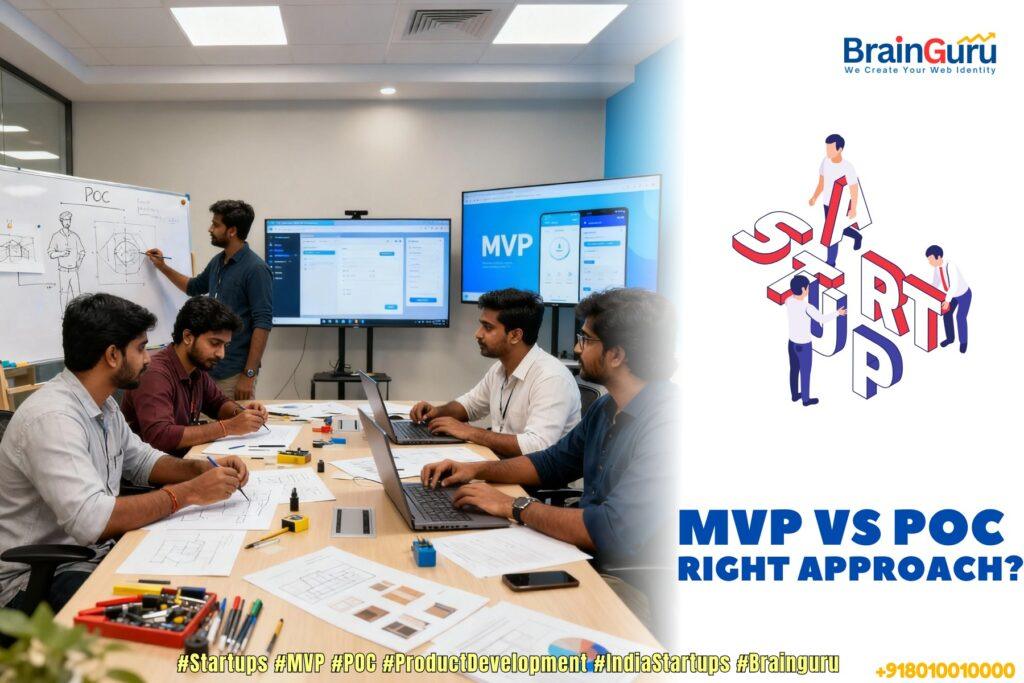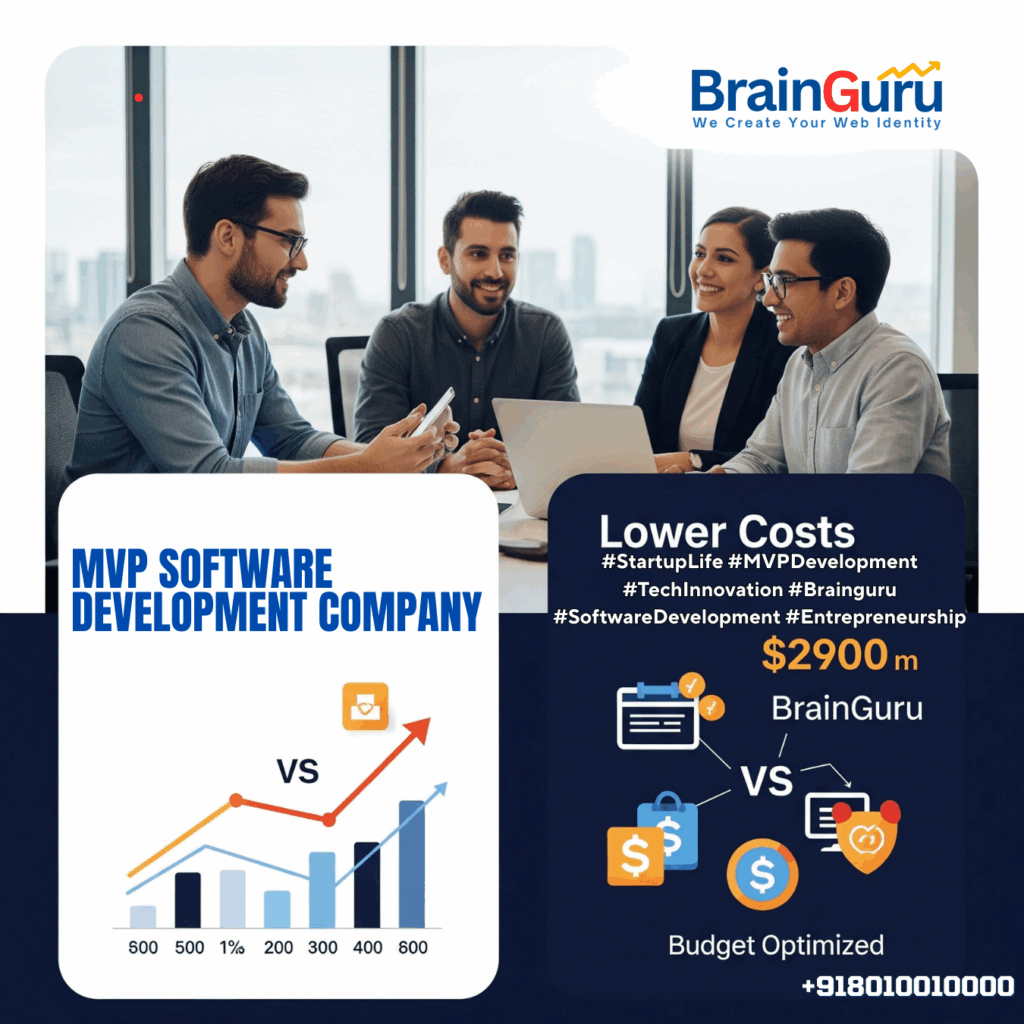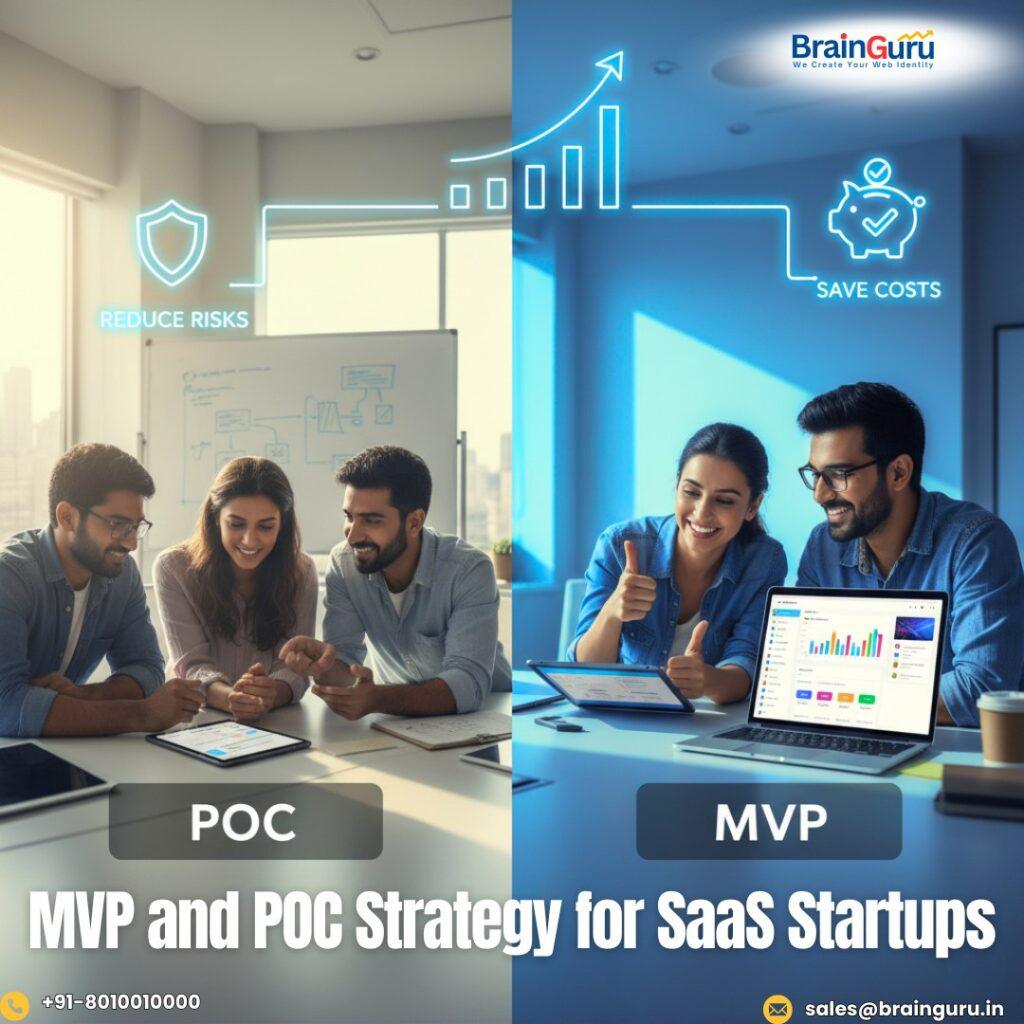
POC vs MVP: What’s the Right Approach for Your Startup?
Launching a startup is an exciting yet risky journey. Before investing heavily in building a full-fledged product, entrepreneurs need to validate whether their idea is feasible, desirable, and scalable. This is where two popular approaches come in: POC (Proof of Concept) and MVP (Minimum Viable Product).
Both POC and MVP help reduce risk, but they serve very different purposes. Choosing the right approach can save your startup valuable time, money, and resources — especially in India’s competitive ecosystem, where speed to market and cost efficiency are critical.
In this guide, we’ll explore:
- What is a POC?
- What is an MVP?
- The key differences between the two
- When Indian startups should use POC vs MVP
- Real examples of companies that succeeded with these approaches
- A step-by-step decision framework to choose the right path
What is a POC (Proof of Concept)?
A Proof of Concept (POC) is a small experiment or prototype designed to test whether a specific idea, technology, or feature is technically feasible.
The goal of a POC is not to launch in the market but to answer a crucial question: Can this work at all?
Characteristics of a POC:
- Focused on feasibility: Demonstrates if a technology or solution can work.
- Limited scope: Usually tests one or two core functions, not the full product.
- Short timeline: Built in days or weeks, not months.
- Not for customers: Mainly for internal validation or investor demos.
- Disposable code: Often thrown away after validation; not production-ready.
Example of a POC:
Imagine a fintech startup in India wanting to build an AI-powered credit scoring system for underserved customers. Before building an app, they create a quick POC model that pulls dummy financial data and predicts creditworthiness. If the algorithm works with 80%+ accuracy, the idea moves forward. If not, they save months of wasted effort.
What is an MVP (Minimum Viable Product)?
A Minimum Viable Product (MVP) is a simplified version of your product that solves the core problem for early users and is launched in the real market.
The goal of an MVP is to validate customer demand, gather feedback, and iterate fast.
Characteristics of an MVP:
- User-facing: Designed for actual customers.
- Core features only: Strips down to essentials needed to solve the main problem.
- Iterative: Feedback from users shapes future versions.
- Market validation tool: Tests desirability and business potential.
- Built with scalability in mind: Code and design may evolve but not entirely discarded.
Example of an MVP:
Ola Cabs (now Ola) started in India as a simple website where users could book cabs online. No complex app, no advanced AI — just a booking system with driver details. That MVP validated market demand for online taxi booking, and Ola later scaled into a multi-billion-dollar mobility platform.
POC vs MVP: Key Differences
Factor | POC (Proof of Concept) | MVP (Minimum Viable Product) |
Purpose | Validate technical feasibility | Validate market demand & usability |
Audience | Internal team, stakeholders, investors | Real customers & early adopters |
Scope | Limited function or technology demo | Core product solving main problem |
Speed | Very fast, days or weeks | Longer, but still lean (weeks to months) |
Code Quality | Rough, experimental, often discarded | Production-grade, designed for scaling |
Outcome | Decision: Can we build it? | Decision: Should we build it further? |
When Should Startups Use a POC?
A POC makes sense when:
- You’re testing a new technology or innovation
Example: A health-tech startup wants to integrate AI diagnosis into radiology scans. Before going live, they test if their algorithm can detect patterns accurately. - You need to convince investors or stakeholders
A quick POC can show that your concept is technically viable, building investor confidence. - You face high technical uncertainty
If the biggest risk is “Can this even work?”, then POC is the way to go.
When Should Startups Use an MVP?
An MVP is the right approach when:
- You need real customer validation
Example: An ed-tech startup wants to test if students in Tier-2 Indian cities will pay for live doubt-solving sessions. A simple MVP app offering limited subjects can validate demand. - Your idea is not technologically risky but market-risky
Many ideas are easy to build but uncertain in demand. An MVP helps test if customers actually want it. - You want to enter the market quickly
In India’s fast-moving digital landscape, being first often creates an advantage. An MVP lets you test, learn, and adapt faster than competitors.
POC vs MVP in Indian Startups: Real Scenarios
- Fintech: Many fintech startups begin with a POC to validate integration with UPI, RBI compliance, or fraud-detection algorithms. Once validated, they roll out MVP apps to test adoption.
- Health-tech: Startups test AI-based diagnostics with POCs in labs. Once proven, they launch MVPs for doctors and patients.
- E-commerce: Here, tech feasibility is rarely a problem. The bigger question is customer demand. Flipkart’s MVP was simply an online bookstore — no warehouses or logistics network at first.
- AI/Deep Tech: Startups working on computer vision, robotics, or NLP often require POCs to ensure algorithms perform as expected. MVPs come after the core tech risk is resolved.
Benefits of POC
- Reduces technical risk early
- Saves cost and time on failed ideas
- Builds investor confidence
- Helps choose the right tech stack
Benefits of MVP
- Validates product-market fit
- Generates early traction and revenue
- Provides customer feedback loop
- Attracts investors with real users
POC or MVP? A Decision Framework for Founders
Here’s a simple guide to decide which approach is right:
- Is your biggest risk technical?
- Yes → Start with a POC.
- No → Move to MVP.
- Do you need to convince investors about feasibility first?
- Yes → POC.
- No → MVP.
- Are you ready to launch to customers?
- Yes → MVP.
- No → POC.
- Do you need fast feedback from the market?
- MVP is the answer.
In many cases, startups use both in sequence: POC → MVP → Full Product.
Challenges with POC and MVP
- POC Challenges:
- May not reflect real-world constraints
- Risk of over-investing in throwaway work
- Can give false confidence
- MVP Challenges:
- Striking balance between “minimum” and “viable” is tricky
- Risk of poor UX if too minimal
- Early customer feedback can be harsh
Best Practices for Indian Startups
- Timebox POCs: Keep them lean (1–3 weeks).
- Don’t overengineer MVPs: Focus only on the core value proposition.
- Leverage low-code/no-code tools: Great for fast MVP development.
- Involve customers early: Especially in India, user behavior differs across regions, so feedback is critical.
- Plan for scalability: Even MVPs should be built with an eye on growth if validated.
Conclusion
Both POC and MVP are essential tools in a startup’s product development journey — but they solve different problems.
- If your main risk is technical feasibility, begin with a POC.
- If your main risk is market demand, build an MVP.
In India’s startup ecosystem, where cost efficiency and speed matter, the smartest founders use both approaches strategically: a POC to prove the technology, followed by an MVP to prove the market.
By choosing the right approach at the right time, your startup can reduce risks, attract investors, and move confidently toward product-market fit. Connect with Brainguru Team for Expert Advice.



